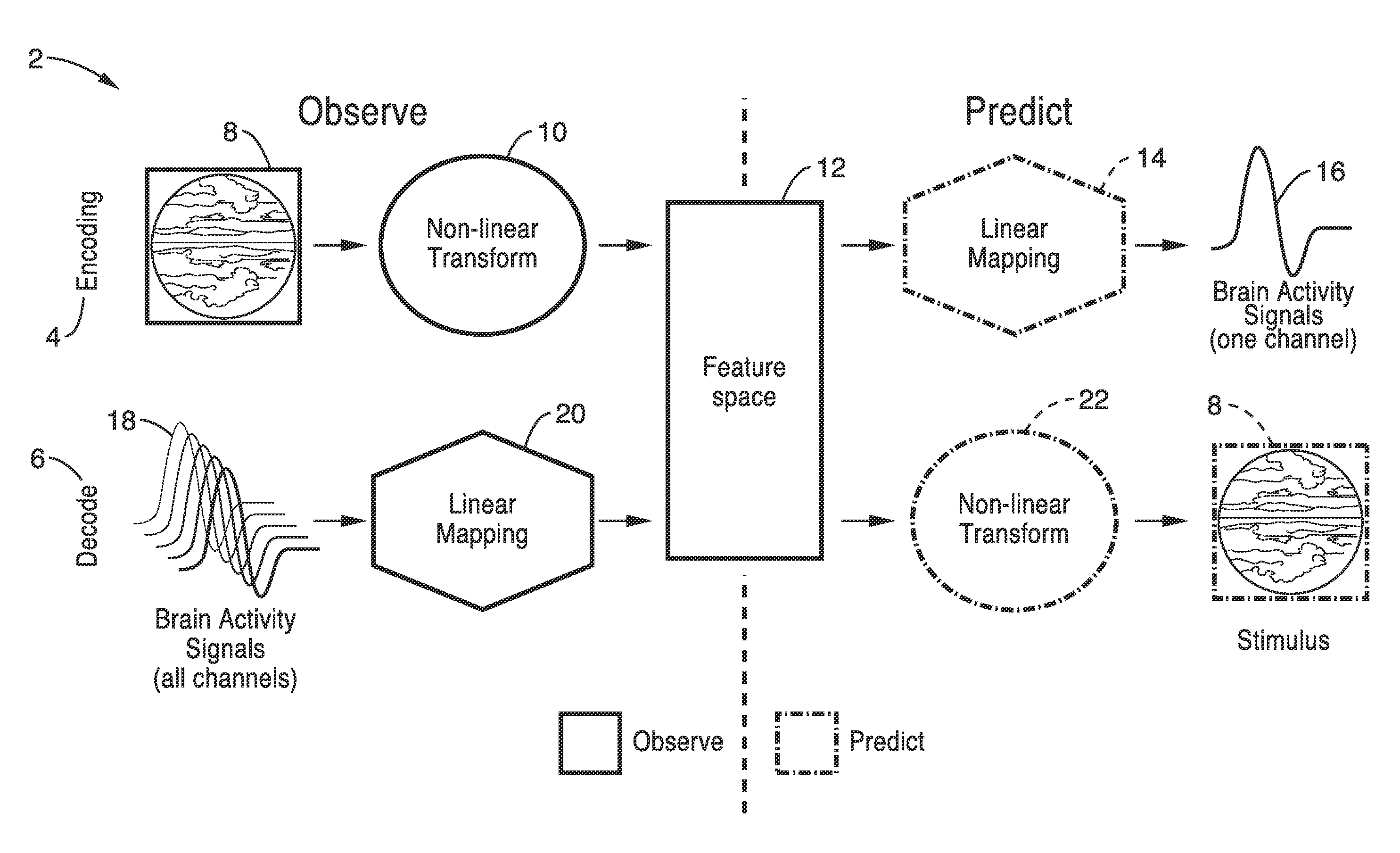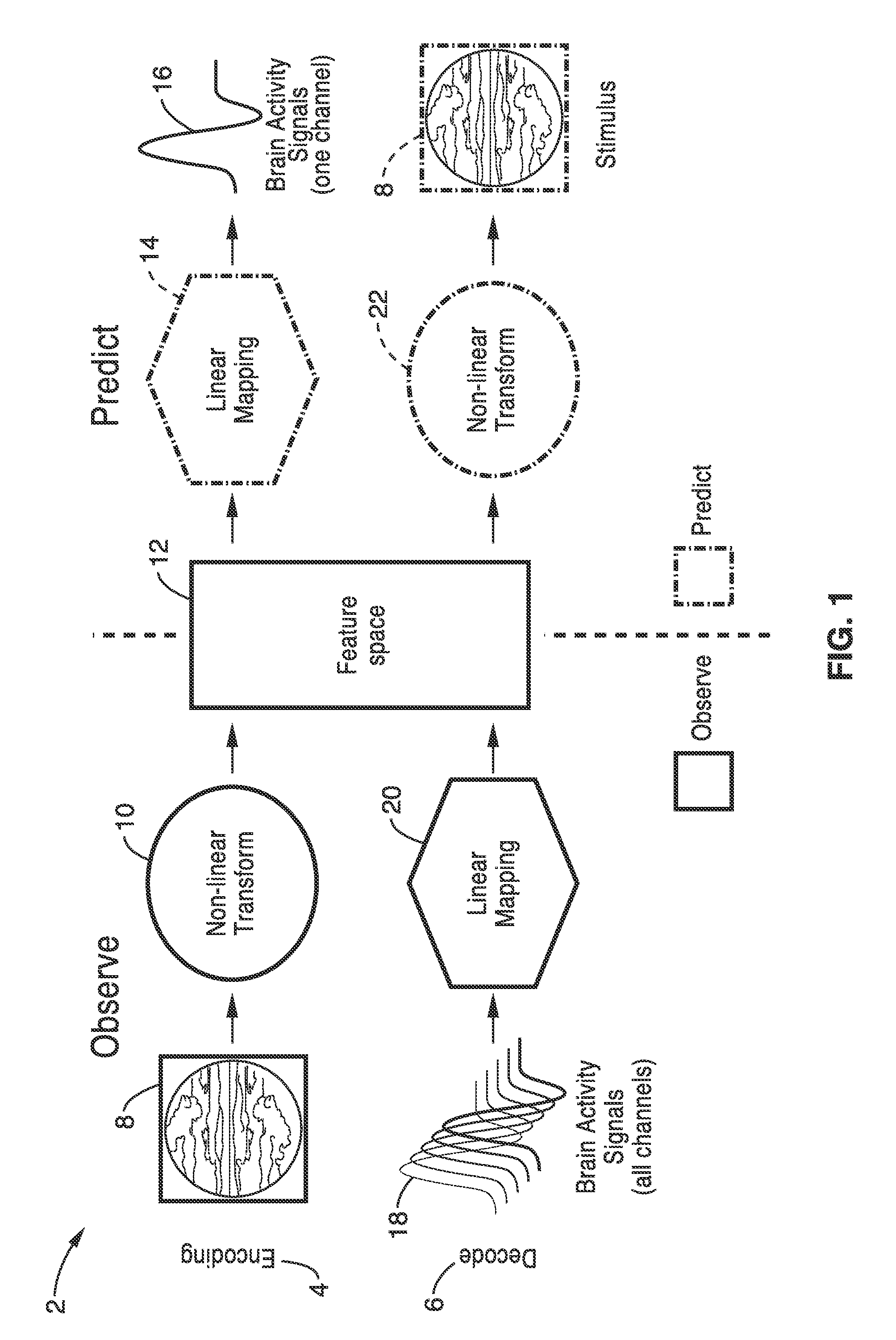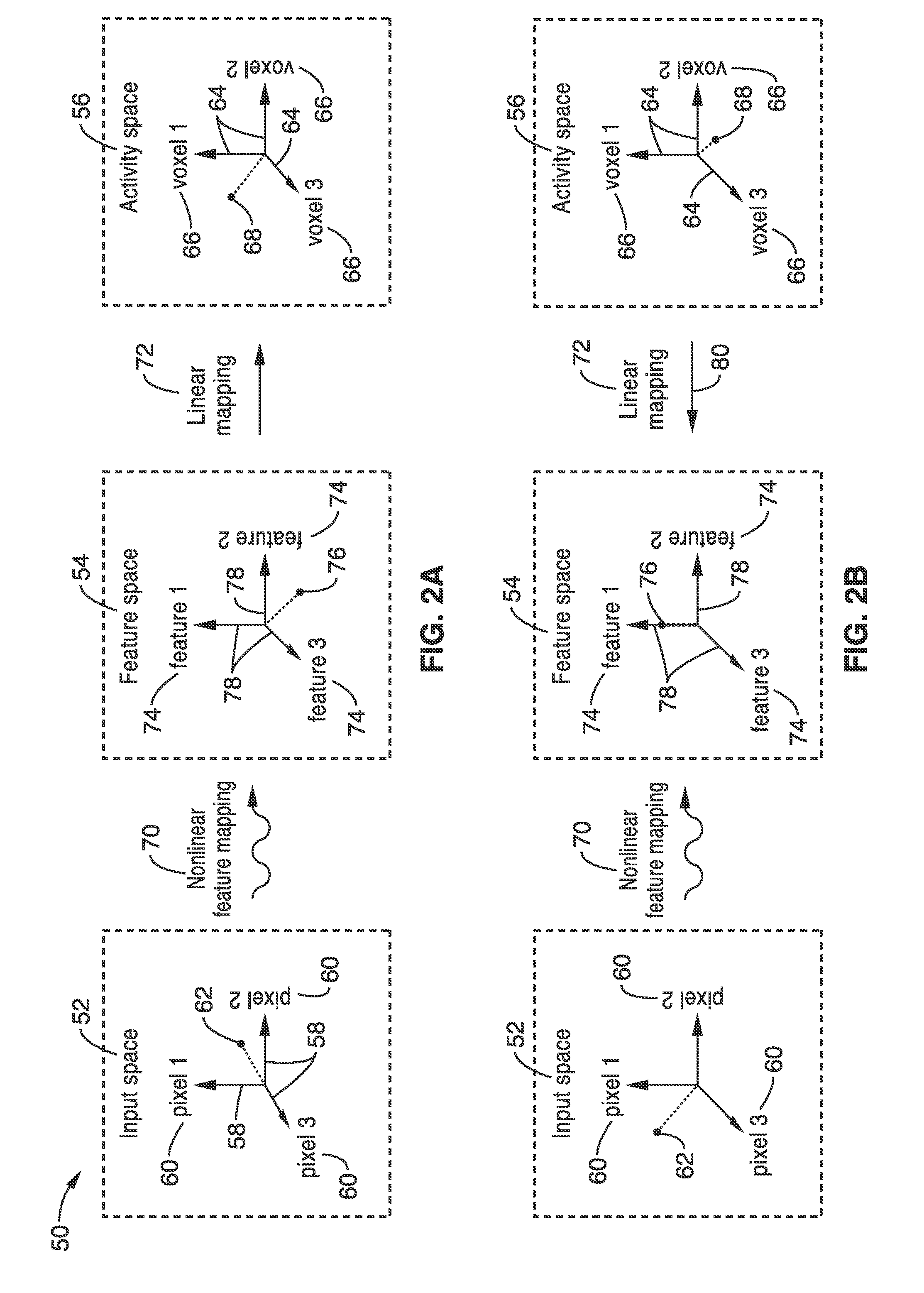Apparatus and method for decoding sensory and cognitive information from brain activity
a brain activity and sensory information technology, applied in the field of apparatus and method for decoding sensory and cognitive information from brain activity, can solve the problems of categorizing, using and limiting the standard classifier approach to identify stimuli categories
- Summary
- Abstract
- Description
- Claims
- Application Information
AI Technical Summary
Benefits of technology
Problems solved by technology
Method used
Image
Examples
Embodiment Construction
[0016]In general terms, systems and methods according to embodiments of our invention provide for decoding and reconstructing the content of various perceptual and cognitive systems in the brain by measuring brain activity, creating appropriate encoding models, transforming these encoding models to decoding models, applying the decoding models to novel brain activity measurements and generating a reconstruction of the stimulus that elicited the brain activity.
[0017]FIG. 1 is a schematic diagram 2 that illustrates the encoding 4 and decoding 6 approach used to reconstruct visual stimuli 8 (e.g. pictures or movies) or mental states. The stimulus 8 is first transformed nonlinearly 10 into a feature space 12 such that the relationship 14 between the features and brain activity measurements 16 is as linear as possible. A separate encoding model is estimated for each brain activity measurement 16 for each sensor channel (area or voxel point in the brain). For two-dimensional methods such ...
PUM
 Login to View More
Login to View More Abstract
Description
Claims
Application Information
 Login to View More
Login to View More - R&D
- Intellectual Property
- Life Sciences
- Materials
- Tech Scout
- Unparalleled Data Quality
- Higher Quality Content
- 60% Fewer Hallucinations
Browse by: Latest US Patents, China's latest patents, Technical Efficacy Thesaurus, Application Domain, Technology Topic, Popular Technical Reports.
© 2025 PatSnap. All rights reserved.Legal|Privacy policy|Modern Slavery Act Transparency Statement|Sitemap|About US| Contact US: help@patsnap.com



